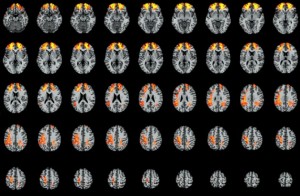Discourse comprehension is the term used to describe the human brain’s ability to make sense of language, whether presented in spoken or written forms. In an effort to better understand the brain’s mechanism that underlie discourse comprehension, a research team lead by professor Aron Barbey gathered to conduct a study on the subject.
The study was conducted on 145 American male Vietnam War veterans who obtained war-related head injuries. Such injuries were studied due to their nature as focal ones, unlike those obtained after strokes for example. Focal injuries give researchers an opportunity to specify the structures significant for discourse comprehension.
The research team aimed to compare the discourse comprehension abilities of patients with damage to specific brain regions in comparison to others where those same brain regions are intact.
The researchers used a technique called Voxel-based Lesion Symptom Mapping to create a collective three-dimensional map of the cerebral cortex from the veterans’ computed tomography (CT) scans. The resulting brain map was then divided into smaller units called voxels*. Researchers were then able to compare similar voxels between injured and non-injured brains.
After analyzing and comparing both brain maps, the research team concluded that areas in the frontal and parietal cortex were recognized as vital for discourse comprehension.
“The findings help us understand the neural foundations of discourse comprehension, and suggest that core elements of discourse processing emerge from a network of brain regions that support language processing and executive functions. The findings offer new insights into basic questions about the nature of discourse comprehension,” Barbey said.
Barbey added that such a study “could offer new targets for clinical interventions to help patients with cognitive-communication disorders.”
*Voxel: volume element, representing a value on a regular grid in three dimensional space-wikipedia
Source: New Bureau/Illinois
Image Credit: Aron Barbey




